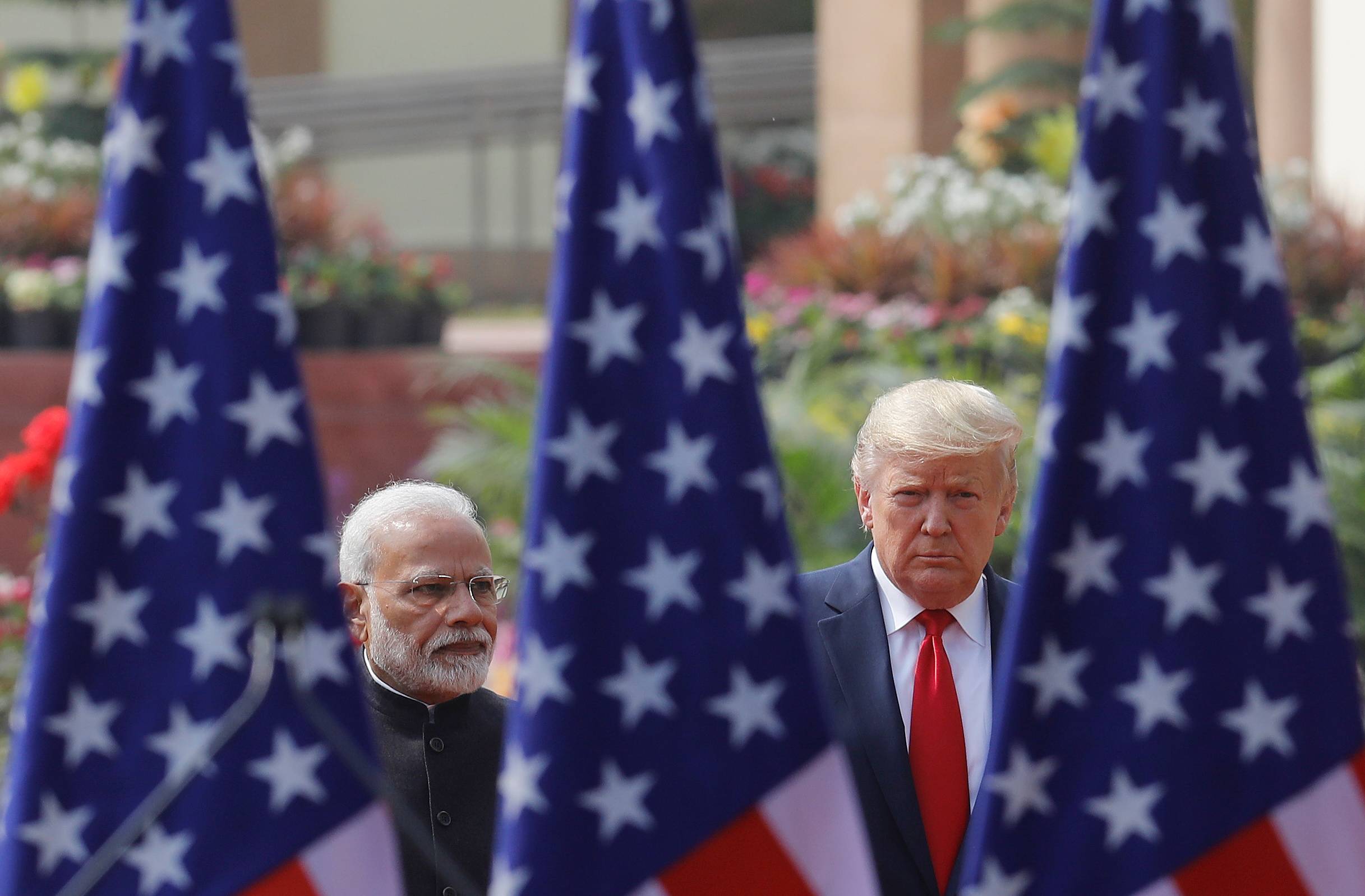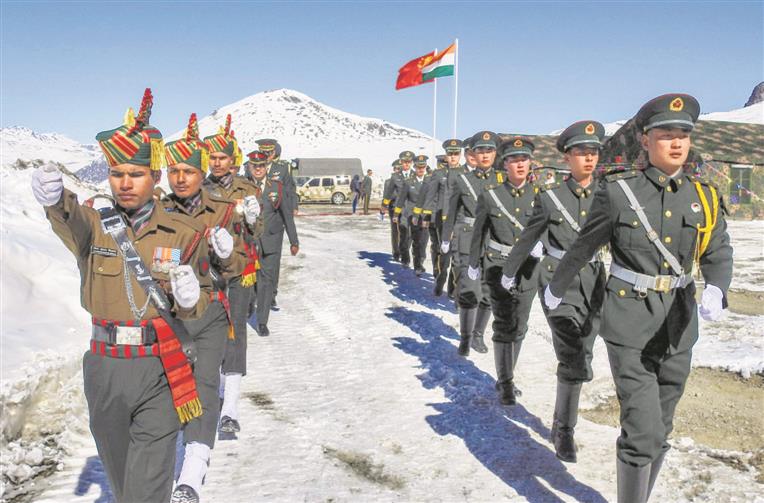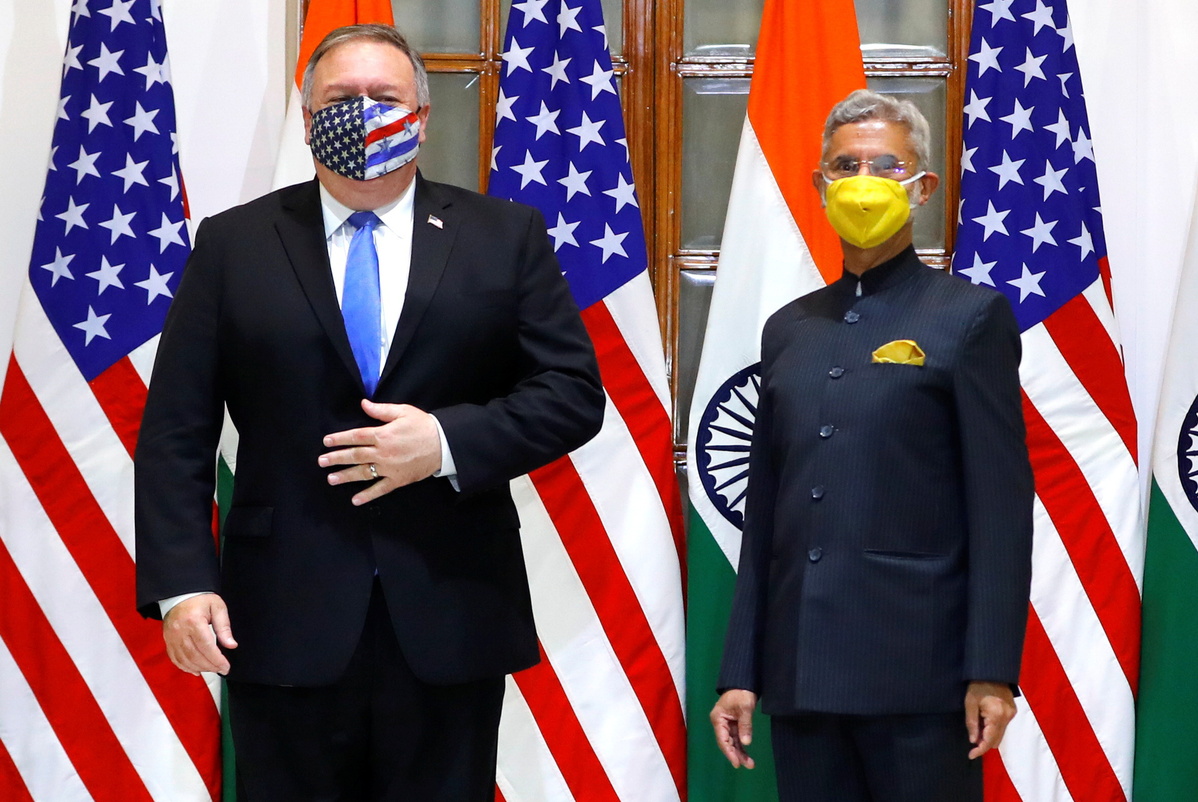An Analytical Survey of Major Historical Shifts
The ongoing Washington-New Delhi strategic bilateralism patterns cannot be separated from the South Asian regional politics where two nuclear powers have developed various points of disagreement. The quest for acquiring regional hegemonic status in South Asia has led Indian leaders to maintain strategically cooperative ties with extra-regional powers where the U.S. emerged as the state most willing to support India in regional and global affairs. Additionally, the American presence in the South Asian regional politics have always been a permanent feature of India-Pakistan hostility in which Washington has always preferred to strengthen its ties with India, parallel to considering Pakistan as only an ally. The emerging potential of India convinced American leaders to view New Delhi as a major strategic partner. The two governments under different administrations also attempted to overcome their major differences while reducing major points of tension under the changing global power politics patterns. In this way, bilateral collaboration between Washington and New Delhi witnessed a few strategic convergence phases. Indian ambition for dominating the politics of its domestic region by opposing the presence of territorially adjoining nations in the South Asian politics convinced the United States to add India in its greater South Asian policy. Based on regional politics Washington decided to keep New Delhi in its global strategic calculations. The combination of American-Indian geostrategic interests at regional and global levels allowed both to support each other against potential security threats. Despite having various differences on diverse regional and international issues, the two leaderships have managed to achieve an exceptional long global strategic partnership based on shared democratic values, and unprecedented growth of convergence of interests at bilateral and regional levels.
The study of bilateral values revolving around the multidimensional strategic affairs of interstate relations between the U.S. and India portrays a unique picture of strategic bilateralism where the two side’s state authorities are determined to empower each other without any thought to their impacts on other states. The growth of Washington-New Delhi ties has witnessed many dramatic shifts due to a change in the international political landscape and the South Asia security environment. Global intellectual communities from different regions have tried to examine the ties between Washington and New Delhi under the changing dimensions of global power politics while emphasising Washington’s global geopolitical interests. Under the greater geopolitical designs of American foreign policy, U.S. state officials decided to collaborate with India in major security and defence affairs. The Indian quest for dominating the territorial and maritime affairs of its home region and its ambition for acquiring an influential role in world politics convinced Washington to engage with New Delhi to strengthen its position in Asian politics. In short, the joint strategic objectives in the Asian political landscape gradually became the mainstream bonding force between Indian and American governments. An analytical survey of US-India strategic bilateralism cannot be complete without understanding the major historical shifts in the bilateral interaction of both governments.

The initial phase of their bilateral cooperation started after the Second World War. During this period, the United States and India’s political authorities defined the quid pro quo basis of bilateral ties in which Indian leaders tried to secure the support of an extra-regional power, and the U.S. considered India as an essential ally for the support of its foreign engagement. Moreover, the Indian leaders were strong-minded in undermining Pakistan’s role in the regional and extra-regional affairs with Washington’s help. In other words, the genesis of Indo-US relations is inherited in the post-independence period when the British colonial powers withdrew from the subcontinent. The British retreat granted independent status to India parallel to creating Pakistan as a Muslim state in the decolonised subcontinent. The creation of Muslim majority Pakistan and a secular India laid the foundations of an eternal ideological rivalry between both nations. The inception of ideological conflict between both states caused massive bloodshed at the time of partition due to which they started considering each other as potential enemies. The initial confrontational designs multiplied over time and leaders of the two sides decided to stand against each other in regional and extra-regional affairs. This rivalry led the leaders of both nations towards the extra-regional powers where the United States emerged as an influential actor. Initially, prime minister Jawaharlal Nehru met American President Harry Truman during his visit to the U.S. and laid the formal foundations of diplomatic relations. India leaders communicated their Non-Aligned position during the Cold War period, Nehru’s proclamation of an inter-continental Non-Aligned Movement further cleared India’s neutral stance in the international system’s emerging bipolar design under the communist and capitalist shadows. It was the era of an informal and undeclared bilateral relationship with both Cold War contestants because Nehru’s show of neutrality in world politics was an adroit move that signaled not standing against the U.S. and also not opposing the U.S. position in the intense rivalry for global hegemony with the Soviet Union openly. In this way, the adaptation of a Non-Aligned position restricted Indian leaders from formally standing with anti-American forces during the decades-long rivalry of the Cold War. The initial years of friendship between India and the U.S. witnessed a tentative framework of strategic interaction when Nehru’s vision for placing India among the great powers encouraged the Indian leaders to start a nuclear journey. The objective of acquiring nuclear technology was not formally opposed by the western bloc of states led by Washington.
The second major shift in the US-India strategic bilateralism appeared when authorities of the two sides realised the common security threat in the form of China, parallel to exploring different areas of cooperation beyond security. The Chinese role in Asian politics was considered a common threat for both Washington and New Delhi and various ideological and social commonalities. So, the Indo-US initial foundations of cooperation strengthened the bilateral values through rising various commonalities between the struggles of Martin Luther King Jr. and Mahatma Gandhi. Further ideological similarities in the form of democratic political systems connected the two governments in a close diplomatic association. On a reciprocal basis, Dwight Eisenhower became the first American President to visit India in 1959. Eisenhower addressed the Indian Parliament to formalise the bilateral diplomatic connections between the two nations. The Nehru administration’s official neutral standing covered in a Non-Aligned policy was the primary hurdle in the initial days of Indo-US bilateral dealings, which stopped India from publicly acknowledging its American diplomatic closeness. The American geostrategic objective for making India a counter-weighting power to communist China was a serious challenge that the Eisenhower administration accessed. Eisenhower’s worries became true during the India-China border clash in the Tibet region in 1962. The U.S. and India’s position based on a common security issue resulted in an intense engagement of the American intelligence community in the South Asian region against communist China. This support to India over the Tibetan issue became a landmark development which strengthened bonds between the leaders of both nations. The McMahon Line’s India-China war was a radical orientation of an Indian Tibet policy when the Nehru government preferred to support CIA and Tibetan insurgents against the People’s Liberation Army (PLA). CIA launched its Tibetan operation via multifaceted anti-Chinese covert operations consisting of various military and paramilitary operations, intelligence activities, propaganda campaigns while supporting India. The Indo-China rivalry laid the foundations of strong bilateral strategic relations between the world’s largest and world’s oldest democracies.

The close strategic collaborative connection was disturbed in 1974 when India became the first country out of the five permanent members of the United Nations Security Council (UNSC) to announce its nuclear capabilities. During the initial phase of the international non-proliferation regime in the 1970s, Indira Gandhi first announced the nuclear program against non-proliferation’s evolving global norms. The Peaceful Nuclear Explosion (PNE) posed a serious question on the creation of the Nuclear Nonproliferation Treaty (NPT) and forced the proponents of the non-proliferation regime to formulate the Nuclear Supplier Group (NSG). American opposition to the Indira Gandhi’s decision of conducting peaceful nuclear tests under the Smiling Buddha exhibited Washington’s disturbance due to the Indo-Soviet Treaty of Peace, Friendship and Cooperation in 1971. It was a minor deviation of New Delhi from its pronounced neutrality policy in the communist-capitalist division of the international system. Nehru’s decision of adopting a neutral position and New Delhi’s preference of building strong bilateral ties, more than the U.S., with the Soviet Union were the main points of disagreements between Washington and New Delhi. The close Indo-Soviet ties were further strengthened when New Delhi gained a momentous position in the Gorbachev’s new policy for the third world countries. The subsequent developments observed the signing of various mutual avenues of cooperation by the Russian and Chinese leaders to manifest shared goals that left worse impacts on the Indo-US relations. In reaction to the evolving close connections between Beijing and Moscow, the governments of Washington and New Delhi realised the need for constructing a bilateral strategic alliance.
An era of brief diplomatic estrangement occurred in the last phase of Soviet-US competition for global dominance which could be treated as a third major shift in the Washington-New Delhi strategic ties. The Indian leaders decided to alter their foreign relations because of the changing landscape of the international security environment. Indira Gandhi met Ronald Regan in 1982 for improvement of strained bilateral relations. The quest for achieving an increased level of cooperative ties with Washington led New Delhi to revise the conventional patterns of its foreign relations with states beyond its home region. The policy of ‘Act East’ or ‘Look East’ was a strategic move adopted in 1992 to cultivate economically close ties with the states of the Southeast Asian region. The extension of influence beyond the South Asian region raised India’s significance in Washington and the American security establishment decided to start annual naval exercises with the Indian Navy in the Pacific region. Japan’s inclusion in the bilateral naval exercises (Malabar Exercises) gave rise to a trilateral strategic forum in the maritime domain. The trilateral naval cooperation gradually started attracting other states of the Pacific region under the broader American strategic umbrella in the South China Sea. In addition to the joint naval drills, P.V. Narasimha Rao and Atal Bihari Vajpayee’s governments upgraded diplomatic ties with major US allies. The subsequent developments in the bilateral diplomacy further resulted in various reciprocal visits by the two sides. Rao’s broader liberalisation plan was crafted by his finance minister, Manmohan Singh in the post-Cold War international system. The arrival of India’s economic liberalisation policies augmented New Delhi’s significance in the American greater South Asian strategy. In addition to supporting the American geostrategic interests in the Asia Pacific region, India’s foreign policy diplomatic changes altered the conventional patterns of the management of its foreign relations in the greater Asian region. The cultivation of close diplomatic ties with the major US allies, including Israel, Japan and South Korea was appreciated by the United States. The persuasion of close security ties with Japan and Australia formulated the Quadrilateral Security Dialogue (commonly known as Asian NATO) under the multidimensional strategic bilateralism between Washington and New Delhi. The four nations’ governments decided to remain committed against China’s rising role in the Asia Pacific region where the United States has severe reservations on Beijing’s standing.

Another brief phase of diplomatic uncomfortableness occurred between Washington and New Delhi after the Indian testing of nuclear devices in 1998. Vajpayee’s decision of detonating nuclear devices spawned an unending nuclear race in the South Asian region. The nuclear test at the Indian Army’s Pokhran Test Range was considered an Indian attack on the US global non-proliferation campaign because it started a nuclear arms race in South Asia. A temporary phase of diplomatic disaffection resulted in various sanctions in India’s economic and strategic direction from different developed countries where the U.S. stood above all. Furthermore, New Delhi’s decision of staying away from the US-supported global non-proliferation campaign in the form of the nonproliferation treaty annoyed Washington. Indian leaders started critically examining the role of US-sponsored and US-supported international non-proliferation campaigns while continuing to secure strategic supplies from different directions. An unprecedented growth of diplomatic unfriendliness was seen with the arrival of the twenty-first century and globalisation because the emergence of new realities in the international system introduced an era of transnational security threats. The emergence of non-traditional security threats placed the entire international society of states under the threat of terrorism in which the United States became a victim of a tragic terrorist incident. In response to the September 11 attack, the Bush administration launched an international alliance against the clandestine networks of terrorist organisations and their transnational covert connections. New Delhi decided to support the U.S. in its global war on terror because the Indian leaders planned to undermine Pakistan and the United States’ historical diplomatic cooperation. In the quest for isolating Pakistan in global politics, the Vajpayee government preferred to join the Bush administration to augment its strategic bilateralism with the U.S.
The Signing Of NSSP and MDP opened A new window of opportunity based on a more coordinated and cooperative approach between the two.
The fourth phase introduced American bilateral separatism in South Asian region where Washington started preferring India over Pakistan in its strategic affairs. The combination of post-1998 and post-9/11 changes in the South Asian region resulted in an increased American bilateralism level with New Delhi and Islamabad on separate basis due to rising Sino-Pak relations. In reaction to economically collaborative ties between Beijing and Islamabad, Indian and American leaders started exploring various cooperation areas, mainly in security and defence. A major change in strategic cooperation occurred in the Clinton era when American leaders started preferring New Delhi as a close strategic partner and a reliable ally against rising Chinese influence. The landmark development occurred in 2004 when the two governments signed the Next Step in Strategic Partnership (NSSP) and expanded strategic cooperation in the nuclear, space, and military domains. The formulation of cooperation in three mainstream areas, civilian nuclear activities, civilian space programs, and high-technology trade boosted the conventional patterns of strategic bilateralism between Washington and New Delhi. US decision to declare India as a Major Defence Partner (MDP) in 2016 was an acknowledgement of Delhi as an essential ally in global world politics. The signing of NSSP and MDP opened a new window of opportunity based on a more coordinated and cooperative approach between the two. A series of agreements in the maritime and military affairs enhanced the scope of strategic bilateralism between them.
While keeping in view the abovementioned Indo-US ties under various phases, the Trump-Modi diplomacy cannot be marginalised, which proved to be an alliance of two prominent leaders where both administrations tried to widen bilateral cooperation in the security and defence affairs. The arrival of Trump as the President of the United States dramatically changed many of Washington’s strategic interaction patterns with India and various agreements were signed to provide multifaceted strategic supplies to New Delhi. The quest for consolidating an anti-Chinese potential in the broader Asian political order compelled the India and American leaders to support each other in the regional global affairs parallel to upholding each other in the international power politics. At the present time, the change of government in the U.S. and the return of the Democratic leadership in Washington has pushed Indo-US strategic bilateralism to an uncertain level. The Biden administration will define its method of conducting foreign relations with major US allies and close strategic partners without upsetting the mainstream patterns of its national security interests. In response to the change of leadership in Washington, the Modi government will try to restructure its foreign relations with the U.S. by rationally calculating U.S. South Asian policy’s probable scenarios under Biden. However, leaders from both sides will not want to diminish the widening scope of strategic bilateralism for various reasons.




